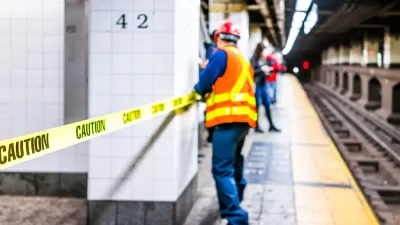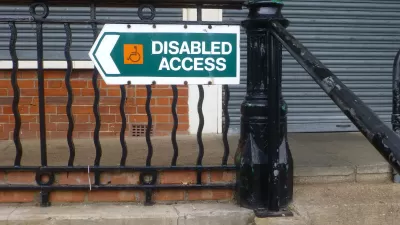Some of the most beloved public parks and essential advances in public sanitation can be traced back to their roots in the Cholera outbreaks in the 1800s.

When cholera claimed the lives of 3,500 residents in a matter of weeks after it reached New York City in the summer of 1832, the disease was considered to be a result of noxious air. Filthy city streets filled with human waste, animal excrement, and garbage caused terrible odors known as "miasma" that were believed to be responsible for the spread of disease.
Misguided fear of miasma had a lasting impact on the built environment. "Miasma theory proponents advocated for better ventilation, drainage and sanitary practices to rid cities of foul-smelling, malevolent air," asserts Christopher Klein. New York's cholera response ended up "spurring urban design elements such as wide boulevards and parks that transformed New York and other major cities into the iconic metropolises we know today." City officials also constructed an over 40-mile aqueduct system designed to carry potable drinking water from north of the city.
Assistant professor of architecture, urbanism, and landscape at Northeastern University Sara Jensen Carr adds that streets were paved to allow waste that exposed the public to miasmic gases to be more easily washed away into underground wastewater infrastructure. Public desire for refuge from the deadly air during the second outbreak led to the planning and construction of Central Park designed by Frederick Law Olmsted who would go on to design more than 100 public parks.
In London, a connection between cholera infection and leaking sewage was made by physician John Snow in 1854. The isolation of the cholera-causing bacterium accomplished by Italian anatomist Filippo Pacini was not widely trusted for decades. 19,000 Parisians died as the result of a 1848 outbreak the year Emperor Napoleon III came to power. "Under the direction of Baron Georges-Eugène Haussmann, French authorities tore down 12,000 buildings, built tree-lined boulevards and parks, erected fountains and installed an elaborate sewage system," writes Klein.
While cholera took the lives of tens of thousands of people worldwide, responses to the disease resulted in discoveries in public sanitation and urban design interventions with a lasting impact on the built environment in some of the most famous cities in the world.
FULL STORY: How Pandemics Spurred Cities to Make More Green Space for People

Alabama: Trump Terminates Settlements for Black Communities Harmed By Raw Sewage
Trump deemed the landmark civil rights agreement “illegal DEI and environmental justice policy.”

Study: Maui’s Plan to Convert Vacation Rentals to Long-Term Housing Could Cause Nearly $1 Billion Economic Loss
The plan would reduce visitor accommodation by 25% resulting in 1,900 jobs lost.

Planetizen Federal Action Tracker
A weekly monitor of how Trump’s orders and actions are impacting planners and planning in America.

Waymo Gets Permission to Map SF’s Market Street
If allowed to operate on the traffic-restricted street, Waymo’s autonomous taxis would have a leg up over ride-hailing competitors — and counter the city’s efforts to grow bike and pedestrian on the thoroughfare.

Parklet Symposium Highlights the Success of Shared Spaces
Parklets got a boost during the Covid-19 pandemic, when the concept was translated to outdoor dining programs that offered restaurants a lifeline during the shutdown.

Federal Homelessness Agency Places Entire Staff on Leave
The U.S. Interagency Council on Homelessness is the only federal agency dedicated to preventing and ending homelessness.
Urban Design for Planners 1: Software Tools
This six-course series explores essential urban design concepts using open source software and equips planners with the tools they need to participate fully in the urban design process.
Planning for Universal Design
Learn the tools for implementing Universal Design in planning regulations.
Caltrans
Smith Gee Studio
Institute for Housing and Urban Development Studies (IHS)
City of Grandview
Harvard GSD Executive Education
Toledo-Lucas County Plan Commissions
Salt Lake City
NYU Wagner Graduate School of Public Service




























